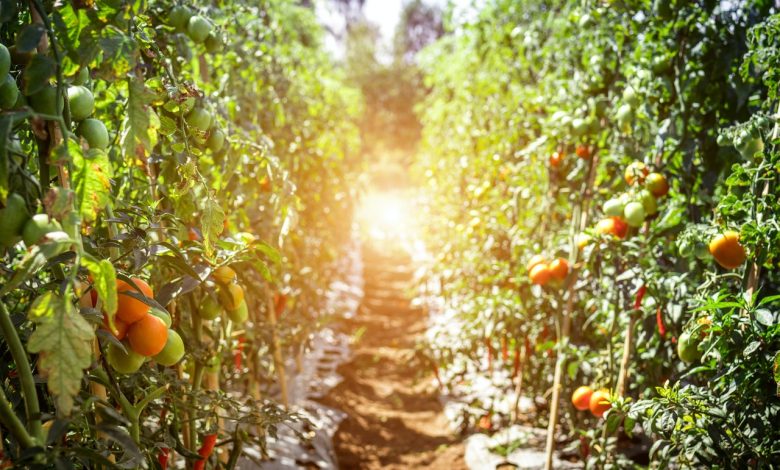
Having your very own backyard garden is a thing of beauty and pride. Growing your food is one of the best feelings in the world, as it’s much tastier, healthier and it’s always a good thing to be self-reliant. Also, these past times have shown us anything, it’s the value and importance of getting some exercise and taking care of your health. Both physical and mental as gardening has proven to have a beneficial impact on both.
Getting into this hobby and way of life has its benefits but, the most important thing is to get the knack for all the ins and outs of the trade. The devil is in the details. That mentioned, we aim to get as many of you into this great hobby as possible. What follows are some of the must-know tips for gardening. And if you are a veteran of the trade, it’s always good to brush up on your knowledge.
1. Take care of the garden soil
While this may seem like a no-brainer, it’s important to stress out just how much there is to do with this. Mulching can prevent weeds from growing and spreading while also giving your plants much-needed nourishment. If you are composting, that’s a great way to refresh the soil with little to no cost. Mixing the old with the new is a practical way of restoring the good old dirt, and breathing much needed fresh air into it.
De-weeding is the next step as you want your plants to get all that needed nourishment and not some pesky weeds. Soil additives provide you with a further edge in your quest for a fruitful garden. Advancements made here are pure natural with extracting various essential elements with chemistry and applying all that in a nifty bottle for easy use.
2. Proper watering of plants
Just spraying water all over the place willy-nilly is not the proper way of doing things. Not only is it wasteful and expensive, but it also does little to help your plants grow. Soaking hoses achieve this the right way. Irrigation (or drip hoses) is also the smart way to go. With both methods, you can control precisely how much water your plants get.
You also limit the watering area, preventing all sorts of pathogens from forming. This prevents many weeds from growing alongside your fruitful plants and prevents pathogens from forming since there is no excess water outflow. All the while saving you a nice sum of money.
3. Pick the correct type of seeds for the garden
This is an area where your dreams must face reality. Planting cultures from different climates can be a difficult and uphill struggle. Sure, there are plenty of plants that can grow and strive pretty much anywhere. But it’s always good to do a bit of research and adapt your needs accordingly. Planting something that thrives in an arid environment in a place where it rains most of the time is just setting yourself up for failure. And one more thing to point out here is that there is plenty of low maintenance and high yield plants out there.
Tomatoes, potatoes, carrots and onions are a sure thing, as they demand very little of your time and energy, but produce an incredible amount. This is, of course, when you consider the area, they take up and water intake, like those, are also factors. With all these in mind, they are the best pick for any garden.
4. Gardening in different areas
When we say “garden”, most of us picture a sprawled out, flat and green area, but the reality can be whatever you wish. Imagination and creativity go a long way here. If you have limited space, you can use vertical gardens. In this scenario, grow your plants in pots that are hanging from a fence. Or put them all on shelves and stack them vertically. You can use an old or adapted pallet as a foundation for this as well. Investing in a greenhouse may seem steep at first but, such a place allows you to grow your plants all year long.
Also, your gardening is located and isolated, allowing you for more control over pests, weeds and the weather. As many plants can’t survive in harsh colds or rainy areas, greenhouses are a perfect solution for this. Other solutions include bringing your plants inside your basement to survive the winter times. It’s warm, sheltered and you don’t need to go outside during the winter. Making it the ideal pastime for those long winter days, as you can fiddle around them in the comfort of your home.
5. Have the proper tools for your garden
Working with worn down, damaged or cheap tools does more harm than good. Imagine something breaking as you are in the middle of your gardening. Or you are forced to use more strength and time since you are working with a worn-out tool, and its performance suffers alongside that. Picking the right tool from the market can be difficult but, Hoselink and similar are a sure bet. Always weigh the cost to benefit ratio here, as many gardening types of equipment can save you a lot of time and increase your yield.
6. Location, location, location
As in real estate, the same applies to gardening. Location is key and, you should also plan your garden layout accordingly. It starts with a simple thing as observing how much sun do each of your areas get. Some plants require and strive under more sunlight, some prefer to chill in the shade so you should plan accordingly. Also, don’t overcrowd your garden. Plants need their space, as do people, so always keep some distance between them. This allows them to breathe and grow without competing for space and wasting their energy and potential growth.
7. Build a raised bed
Since we touched upon the needed area for plants, raised gardening beds are just the ideal solution. They offer space for each plant, you can directly control what’s planted inside, de-weeding is much easier as it is a controlled environment, the list goes on and on. Also, you get the added benefit of your garden looking nice and organized as everything is categorized in its very own little box.
8. Inspect before buying and maintenance
Buying plants that are already partially grown is a great idea to speed things up a bit. Everyday life can take its toll and prevent you from taking care of your garden on time. So, opting for pre-grown plants, at any stage, is a sound investment. Just make sure to peak at the roots (most of them come in see thru containers). If you see plenty of roots at the bottom, that’s a good sign of a healthy plant.
Once you re-plant them in your garden, they will have next to no problems adapting and continuing their growth. While we are on the subject of growing, regular inspection of your plants can reveal valuable info. Your plants can have withered, broken or sick leaves and branches which need trimming. These sap and drain valuable resources from the plan and slow its progress so, it’s best to cut them off as early as possible.
9. Pest control
There is a whole array of pests that can hamper or destroy all of your hard work. Especially if they are left unchecked. Dealing with them can go two ways. Natural and artificial. Natural ways can include planting various pest repelling plants and lucky for you those are almost all fragrant and scented plants. Sage, lavender, mint, lemongrass is just the tip of the iceberg. Their potent but nice smells can drive most of the pests away.
Also, just a tip, ladybugs eat mites and, similar small pests, so don’t toss them away from your garden. If you are having trouble with snails, just use salt. As for artificial, industrial made pesticides, there is also no shortage of options. While these come with a bad reputation, modern and quality products are not harmful. They can be of great help in protecting your garden. Think of them as a quick and easy solution but a costly one when compared to the natural solution.
10. Gardening time is family time
What better way there is to speed up a process but to involve more people? After all, your entire family benefits from having a garden with lots of fresh produce, so it makes sense to involve them as much as possible. Kids will benefit the most from this as you can use this opportunity and make it a teaching lesson. Practical knowledge is easily absorbed and, learning about the world around them is beneficial for school and in the long run.
Helping with various chores develops healthy habits and is a good exercise. Any excuse that you can find to get them out of the house is a good one and, you should use this as much as possible. Your children will appreciate food more and will easily adapt vegetables to their meals. As they will see from where the food comes from, it will be easier for them to eat it as they were involved in the growing process.
No one wants to waste their time and energy. Doing a project and getting next to nothing out of it can be disheartening for anyone. So, it’s important to inform yourself as much as possible and doing things the right way. Just having the motivation to improve is an excellent ground for growth. A little bit of engagement here and there can make all the difference for your garden. Just think of gardening as a marathon and not a sprint and do a bit every day.
Positivity and elan that you feel from daily progress will surely make you shine. And the same will transfer and apply to your plants. They respond to love, care and nurturing with bountiful harvests so, it’s always a win-win scenario when you take care of them. And in the end, you can sit back, relax and be proud of what you achieved. Which is a lush, green and rich garden.



